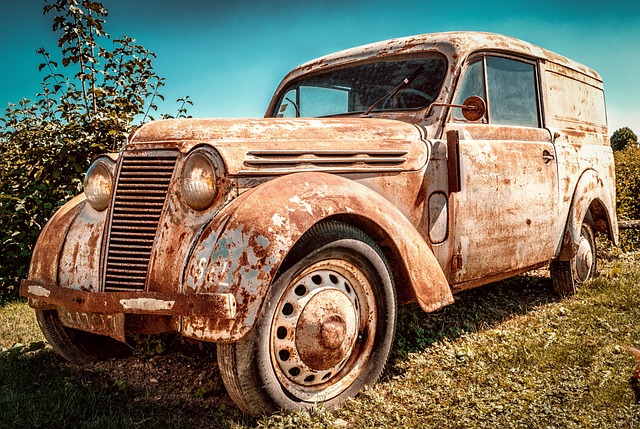Comprehensive vehicle protection offers extensive Vehicle Coverage beyond basic requirements, safeguarding against risks like theft, vandalism, natural disasters, and mechanical failures. This type of insurance includes repairs or replacements for direct damage, liability coverage for others' vehicles or properties, medical expense coverage, and roadside assistance. When choosing a policy, review terms carefully, focusing on coverage limits, deductibles, and exclusions to match your vehicle's value, financial comfort, and specific risks. Lower deductibles mean higher premiums but lower out-of-pocket costs, while higher deductibles reduce premiums but require larger upfront payments. Comprehensive protection provides peace of mind, ensuring your investment is secured against various road obstacles.
“Comprehensive vehicle protection is an essential aspect of car ownership, offering far more than basic liability insurance. This article provides an in-depth guide to understanding and maximizing your investment in vehicle coverage. From defining comprehensive protection to exploring real-world scenarios, we break down the benefits, exclusions, and selection process.
Learn about various coverage types, advantages, and potential drawbacks, including deductibles, to ensure you make informed decisions. By the end, you’ll be equipped to choose the best comprehensive car insurance plan tailored to your needs.”
Understanding Comprehensive Vehicle Protection: A Definition

Comprehensive vehicle protection, often referred to as comprehensive car insurance, is a type of auto coverage that goes beyond the standard requirements. It provides extensive vehicle coverage for a wide range of potential risks and damages that drivers might face on the road. Unlike liability insurance which primarily covers accidents caused by the insured driver, comprehensive protection shields you from more unforeseen events.
This includes protection against theft, vandalism, natural disasters like floods or storms, and even damage caused by animals. It also typically covers costs related to repairs or replacements of your vehicle’s parts or, in case of total loss, the value of the car at the time of the incident. Understanding these aspects of vehicle coverage is crucial for drivers aiming to safeguard their investment in a comprehensive manner.
Types of Coverage Included in Comprehensive Policies

Comprehensive vehicle protection policies offer a wide range of coverage options designed to safeguard against various risks and damages. These policies typically include several key components, collectively providing extensive Vehicle Coverage.
The first layer of protection involves coverage for direct damage caused by incidents such as accidents, natural disasters, or theft. This ensures that repairs or replacements are covered, offering peace of mind. Additionally, comprehensive policies often include liability coverage, protecting against claims arising from accidents where you may be held responsible for damages to others’ vehicles or properties. Other common inclusions are coverage for medical expenses if an accident results in injuries, and roadside assistance services, providing help during emergencies like a flat tire or battery failure.
Advantages of Opting for Comprehensive Vehicle Insurance

Opting for comprehensive vehicle insurance offers a multitude of advantages that extend far beyond just financial protection in case of an accident. It provides all-encompassing vehicle coverage, ensuring that various risks and unforeseen circumstances are adequately addressed. This includes damage caused by natural disasters like floods or earthquakes, as well as theft, vandalism, and even mechanical failures.
Comprehensive insurance also brings peace of mind by offering legal protection in the event of a lawsuit arising from an accident. It covers repairs or replacements, reducing out-of-pocket expenses significantly. Moreover, it typically includes roadside assistance services, ensuring help is readily available should your vehicle break down. This level of coverage is especially beneficial for new vehicles, as comprehensive insurance can protect against significant financial losses during the initial years of ownership when repairs might be more costly.
Common Exclusions and Limitations to Be Aware Of

When considering comprehensive vehicle protection, it’s crucial to understand that no policy is all-encompassing. Common exclusions and limitations exist across various providers and coverage types. These can range from damage caused by natural disasters like floods or earthquakes to specific types of accidents, such as racing or reckless driving. Even seemingly minor incidents like mechanical failures or normal wear and tear might not be covered under certain policies.
Before purchasing a comprehensive vehicle coverage plan, carefully review the policy’s terms and conditions. Pay close attention to what is explicitly excluded and ensure that the coverage aligns with your needs. Understanding these limitations will help you make an informed decision and avoid potential surprises when filing claims.
How to Choose the Best Comprehensive Car Insurance Plan

When selecting a comprehensive car insurance plan, it’s crucial to consider your vehicle’s specific needs and budget. Comprehensive coverage is designed to protect against various risks beyond standard accidents, including theft, vandalism, natural disasters, and even mechanical failures. Start by assessing these areas:
1. Coverage Limits: Ensure the plan offers adequate limits for your vehicle’s value. Higher limits provide better protection but may increase premiums. Compare quotes from different insurers to find a balance between cost and coverage.
2. Deductibles: Understand the deductible amount, which is the out-of-pocket expense you’ll pay when making a claim. Opting for a higher deductible can reduce premiums, but consider your financial comfort level with this risk.
3. Exclusions and inclusions: Review the policy’s terms to understand what’s covered and what’s not. Some plans may exclude specific events or have limitations on certain types of vehicle damage. Choose a plan that aligns with your needs by prioritizing coverage for common risks affecting your vehicle.
The Role of Deductibles in Comprehensive Vehicle Coverage

In comprehensive vehicle protection, deductibles play a significant role in determining the out-of-pocket expenses an insured person will bear when making a claim. Deductibles are the amount you agree to pay for repairs or losses before your insurance covers the rest. Choosing an appropriate deductible is crucial as it balances between potential savings on premiums and the financial burden of higher deductibles during claims. Opting for a lower deductible means paying more in premiums but less out-of-pocket when damage occurs. Conversely, selecting a higher deductible can reduce premiums but requires you to cover a larger portion of repair costs upfront.
Understanding how deductibles impact your Vehicle Coverage is key to making an informed decision. Insured individuals should consider their financial situation, driving habits, and vehicle condition to select a deductible that aligns with their needs. By carefully evaluating these factors, policyholders can ensure they receive adequate protection while managing potential expenses effectively.
Real-World Scenarios: When Comprehensive Protection Makes a Difference

In everyday life, vehicles are subject to various risks and unforeseen circumstances that can lead to significant damage or theft. Comprehensive vehicle protection goes beyond basic insurance by offering a safety net for these real-world scenarios. Consider a scenario where your car is damaged in a natural disaster, like a flood or severe weather event. Without comprehensive coverage, such incidents often fall outside the scope of standard auto insurance policies, leaving you with substantial out-of-pocket expenses for repairs or even a total loss.
Similarly, if your vehicle is targeted by thieves or becomes a victim of vandalism, comprehensive protection can step in to cover these unexpected events. This type of coverage ensures that you’re not left stranded and financially burdened when facing such challenges. By providing broader protection against a range of risks, comprehensive vehicle coverage offers peace of mind, knowing that your investment is secured regardless of the obstacles that may arise on the road.
